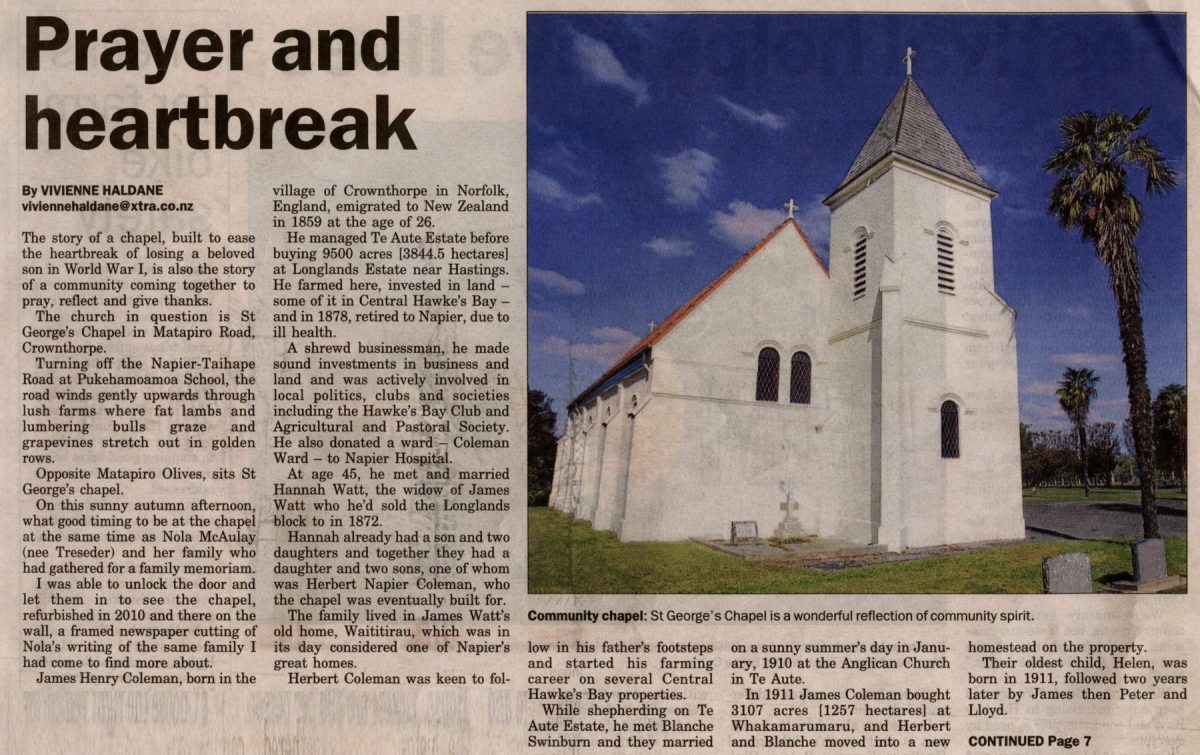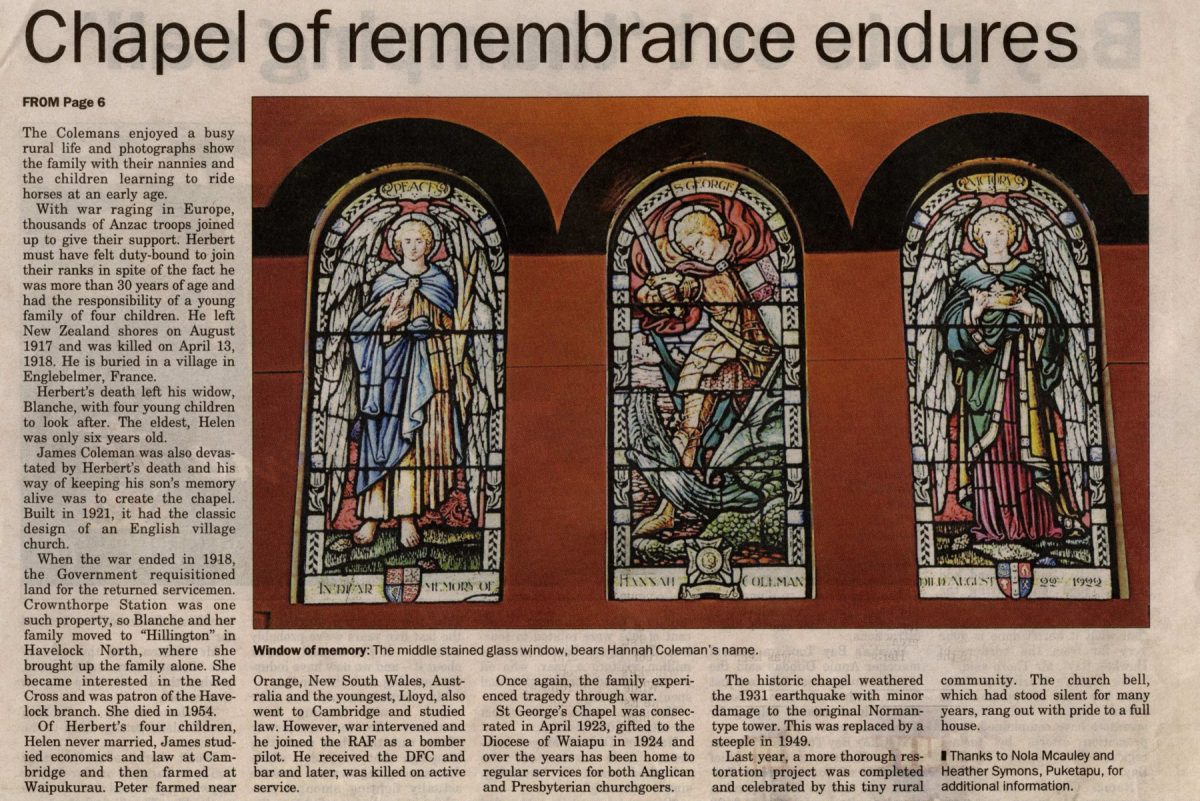Prayer and heartbreak
BY VIVIENNE HALDANE
The story of a chapel, built to ease the heartbreak of losing a beloved son in World War I, is also the story of a community coming together to pray, reflect and give thanks.
The church in question is St George’s Chapel in Matapiro Road, Crownthorpe.
Turning off the Napier-Taihape Road at Pukehamoamoa School, the road winds gently upwards through lush farms where fat lambs and lumbering bulls graze and grapevines stretch out in golden rows.
Opposite Matapiro Olives, sits St George’s chapel.
On this sunny autumn afternoon, what good timing to be at the chapel at the same time as Nola McAulay (nee Treseder) and her family who had gathered for a family memoriam.
I was able to unlock the door and let them in to see the chapel, refurbished in 2010 and there on the wall, a framed newspaper cutting of Nola’s writing of the same family I had come to find more about.
James Henry Coleman, born in the village of Crownthorpe in Norfolk, England, emigrated to New Zealand in 1859 at the age of 26.
He managed Te Aute Estate before buying 9500 acres [3844.5 hectares] at Longlands Estate near Hastings. He farmed here, invested in land some of it in Central Hawke’s Bay and in 1878, retired to Napier, due to ill health.
A shrewd businessman, he made sound investments in business and land and was actively involved in local politics, clubs and societies including the Hawke’s Bay Club and Agricultural and Pastoral Society. He also donated a ward – Coleman Ward – to Napier Hospital.
At age 45, he met and married Hannah Watt, the widow of James Watt who he’d sold the Longlands block to in 1872.
Hannah already had a son and two daughters and together they had a daughter and two sons, one of whom was Herbert Napier Coleman, who the chapel was eventually built for.
The family lived in James Watt’s old home, Waititirau, which was in its day considered one of Napier’s great homes.
Herbert Coleman was keen to follow in his father’s footsteps and started his farming career on several Central Hawke’s Bay properties.
While shepherding on Te Aute Estate, he met Blanche [Mary] Swinburn and they married on a sunny summer’s day in January, 1910 at the Anglican Church in Te Aute.
In 1911 James Coleman bought 3107 acres [1257 hectares] at Whakamarumaru, and Herbert and Blanche moved into a new homestead on the property.
Their oldest child, Helen, was born in 1911, followed two years later by James then Peter and Lloyd.
Photo caption – Community chapel: St George’s Chapel is a wonderful reflection of community spirit.
CONTINUED Page 7













Do you know something about this record?
Please note we cannot verify the accuracy of any information posted by the community.